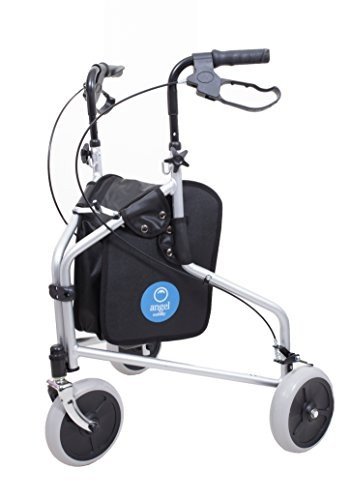A Comprehensive Guide to Buying a Mobility Scooter
Mobility scooters have ended up being an important tool for numerous people seeking to improve their self-reliance and mobility. With shop mobility scooters of designs and functions available, selecting the best mobility scooter can be daunting. This article provides an informative guide to assist consumers navigate their choices, assess their needs, and make an informed purchase.
Understanding Mobility Scooters
Mobility scooters are electric vehicles developed for people who experience mobility challenges. They are particularly advantageous for elders, those with disabilities, or individuals recuperating from injuries. Mobility scooters can vary widely in regards to style, features, and pricing.
Types of Mobility Scooters
Before embarking on a purchase, it's important to understand the various types of mobility scooters readily available:
Three-Wheel Scooters:
- Generally more maneuverable in tight spaces
- Lightweight and portable
- Perfect for indoor usage
Four-Wheel Scooters:
- Offer higher stability and balance
- Ideal for outside usage over different surfaces
- Generally have a longer battery life
Foldable/Portable Scooters:
- Designed to be quickly transferred and stored
- Can typically fit in the trunk of an automobile
- Ideal for those who travel regularly
Sturdy Scooters:
- Built to accommodate bigger people
- Frequently included more robust features for outdoor use
- Usually geared up with larger batteries for prolonged range
Factors to Consider When Buying a Mobility Scooter
1. Weight Capacity
Pick a mobility scooter that can support the user's weight. Most scooters have a weight limit ranging from 250 to 500 pounds. It is essential to guarantee that the scooter can accommodate the user easily.
2. Variety and Battery Life
The variety is how far the mobility scooter can travel on a single charge. Common ranges vary in between 10 to 30 miles. Consider the user's everyday activities and select a scooter with an appropriate variety.
3. Scooter Dimensions
Consider the size of the scooter, including its weight and dimensions. A more compact scooter may be perfect for narrow corridors and tight spaces, while larger designs provide additional stability and comfort.
4. Terrain Capability
Examine where the scooter will primarily be utilized. If the user plans to travel mainly on pavement, a lightweight model might be adequate. Nevertheless, if the user needs to pass through gravel or uneven surfaces, consider a four-wheel scooter developed for off-road use.
Leading Features to Look For
Convenience
- Adjustable Seats: Look for scooters with cushioned and height-adjustable seats to ensure comfort throughout travel.
- Armrests: These boost security and assistance while browsing.
Safety and Visibility
- Headlights and Taillights: Essential for nighttime usage.
- Turn Signals and Reflectors: Improve presence and security while on the roadway.
User-Friendly Controls
- Joystick or Drive Controls: These must be instinctive and easy to control.
- Easy-to-Read Displays: A control board that reveals battery life, speed, and range can enhance the user experience.
Extra Features
- Storage Compartments: These offer included convenience for carrying personal items while on the go.
- Weather Protection: Consider models with rain covers or windscreens if utilized in variable weather.
Cost Considerations
When budgeting for a mobility scooter, rates can vary anywhere from ₤ 500 to over ₤ 5,000 depending upon the model, functions, and brand. Extra costs may include:
- Extended Warranty: Protects against flaws and can save money in the long run.
- Devices: Optional functions, such as upgraded seats, lights, or storage services.
| Function | Cost Range |
|---|---|
| Standard Models | ₤ 500 - ₤ 1,500 |
| Mid-Range Models | ₤ 1,500 - ₤ 3,000 |
| High-End Models | ₤ 3,000 - ₤ 5,000 |
Funding Options
Numerous merchants provide funding plans, and some regional government efforts might provide grants or assistance for those in need. Examine potential financial assistance with community resources or mobility service companies.
Frequently asked questions about Buying a Mobility Scooter
What is the difference between a mobility scooter and a wheelchair?
Mobility scooters are motorized and allow users to browse individually, while wheelchairs might need physical help or manual operation.
How do I preserve a mobility scooter?
Regular upkeep includes examining battery life, cleaning up the scooter, and examining tires and brakes. Always refer to the user manual for particular guidelines.
Can mobility scooters be utilized inside your home?
Yes, numerous models are developed for both indoor and outside use. However, three-wheel scooters tend to be much better fit for indoor navigation due to their tighter turning radius.
Are mobility scooters covered by insurance?
Some insurance coverage plans cover a portion of the costs for mobility scooters if they are deemed clinically essential. Contact your company for particular details.
How quickly can a mobility scooter go?
A lot of mobility scooters have a maximum speed varying from 4 to 8 miles per hour. Nevertheless, the proper pace may differ depending upon local regulations.
Purchasing a mobility scooter can considerably improve one's self-reliance and lifestyle. By understanding the types, features, and costs related to mobility scooters, prospective purchasers can make well-informed decisions that suit their requirements and choices. Customization and comprehensive research study are crucial to guaranteeing fulfillment with this crucial financial investment.

